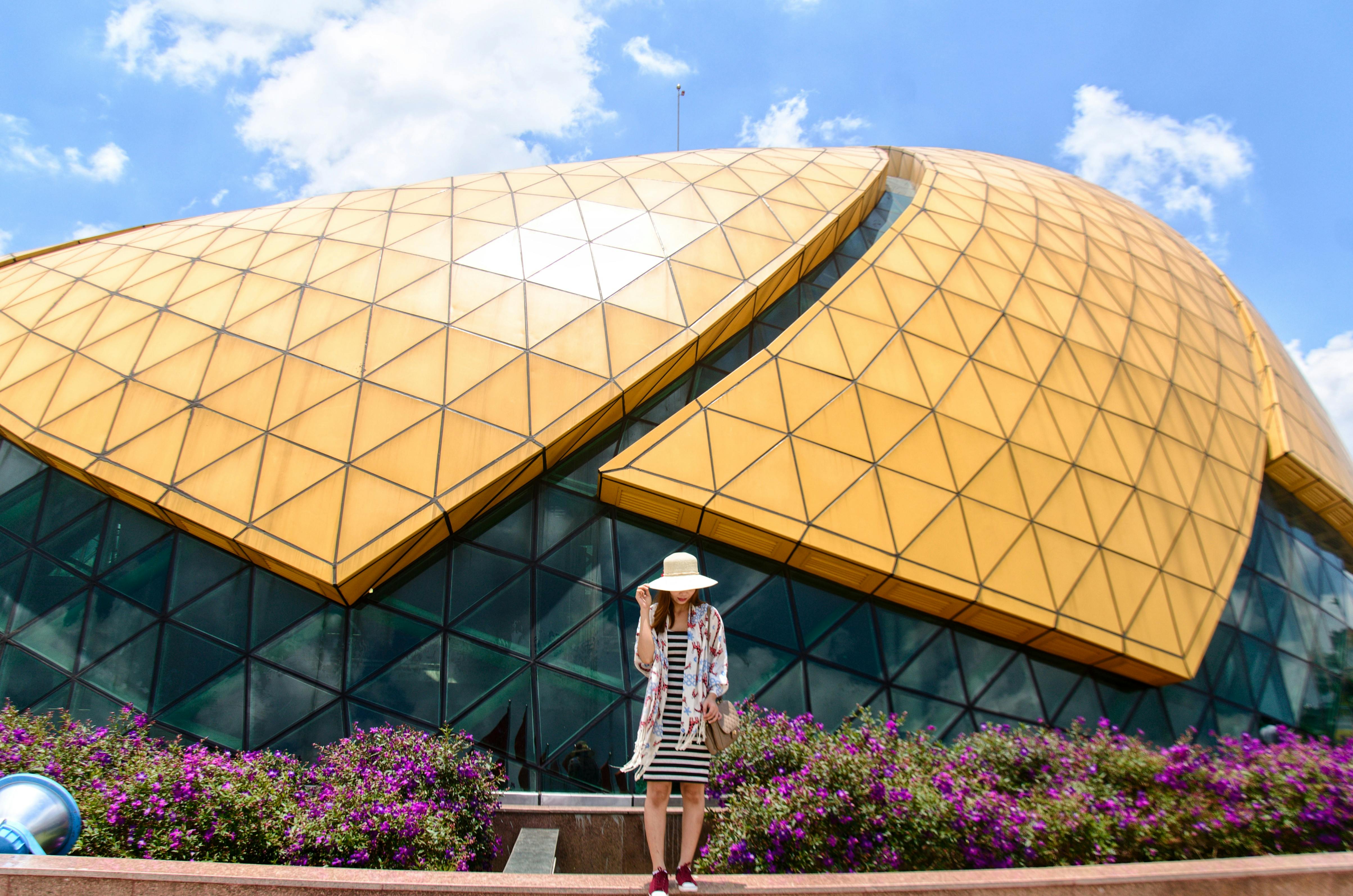indian tribes
The main focus of this article is to outline some historical and esoteric issues related to the Amazon area, where there is the presence of many native tribes, some of them even unknown to us. The world is more importantly aware of the situation of various native peoples, who live in isolation, and it is almost unbelievable that animals have better protection than groups of people living freely in nature, if their wish is to remain forever in isolation. . The desire to live in this way is the legitimate right, the basic right… However, the situation of these people is dire even despite the UN recommendations.
Madidi National Park
One of the most attractive and arcane natural parks is the Madidi National Park, which was established on September 21, 1995. It covers an area of almost 19,000 km2 and is on the border between Bolivia and Peru in Latin America. There is not even a complete list of the flora and fauna of the area, since this place has been little explored until now.
National Geographic classifies this area as “the reserve with the richest biodiversity in the world”. The population is made up of various groups, including uncontacted people. In our history, the Indians were abused by the influx of white settlers, who turned them into slaves, and this is the dark side of Latin America’s history, but in North America it was not much better. Many Indian tribes experienced their worst moments, particularly in the period of the so-called “rubber industry”, when white immigrants often massacred them.
During the time when South America was first explored, some historians followed various native tribes who had never been in contact with white culture. One such tribe is the presumed Toromona group of people. During colonization, the Spanish were not very lucky to settle in the Amazon area, where their main objective was to find a secret place called Patiti, a supposed hiding place of the greatest treasures of the Incas, which the Incas hid. of Spaniards. There are also some historical records that confirm the fact that the Incas sealed underground tunnels in ritual ceremonies.
The Toromona Indians contacted the white civilization only in battle. It is known that they supported the Incas and there are historical records about this tribe, although it has never been found. One of their caciques became famous in a battle against the Spanish and the records say that his name was Tarano.
On occasions in the 20th century, Protestant missionaries observed, during their flight over the Amazon, an isolated group of indigenous people somewhere near the Madre de Dios River and concluded that it could be these toromonas. However, later -after making personal contact with them- they identified them as a very different group (Araona), whose number is around one hundred and live in conditions of vulnerability; however, linguistically they belong to the same group as the Toromona tribe.
The Cordillera Apolobamba is probably the least explored area of the Andes. It is a line of hills – mountain range, whose highest peak is Chaupi Orco at 6044 m above sea level. Many people consider this particular part of the Andes to be a place where El Dorado or Patiti can be found. Apolobamba has a unique ecological environment with unknown species of fauna and flora. Father Miguel Cavello Balboa wrote about a city of gold and described Patiti as a place protected by warrior women; he also mentioned the Toromona tribe with notes that he had no mercy in killing.
A route from La Paz (Capitol of Bolivia) to Pelechuca (a small town in the heart of Apolobamba) takes about 14 hours by bus and civilized people rarely visit such a wild region. This is undoubtedly one of the reasons why this area is so little known. Apolobamba ends with the Amazon jungle on its eastern side; many people died here, as they thought that a path to the legendary “lost city” starts somewhere here. The Madre de Dios forest also begins here; if translated, she is the Mother (Mother) of (of) God (God).
A well-known British traveler, Percy Fawcett, made several expeditions to the Amazon, including this region (Apolobamba), and in 1914 he met an indigenous tribe called the Maxubis in the Mato Grosso region of Brazil. These people were sun worshippers. They showed him some signs to prove that they had come from a much higher civilization.
We can speak of two types of “alienated” indigenous or native tribes: 1) the isolated and 2) the uncontacted. The whereabouts of the isolated are known, but they refuse to contact us. There may be some information about the uncontacted, but contact has never been established. It’s important to understand the word “contact” here, as it means more than just a meeting with a member of the majority race. For example, among the uncontacted is the Toromona tribe, but also Huaorani or Tagaeri, although the existence of the Toromona people requires independent confirmation.
On January 18, 2007, FUNAI (Fundacao Nacional do Indio), which is a Brazilian national institute for the protection of indigenous people, confirmed the presence of 67 tribes as uncontacted, while in 2005 FUNAI reported the figure of 40.
Although the Norwegian biologists Lars Hafskjold, who were looking for this ethnic group (Toromona), became quite famous for their disappearance (1997), we still do not know anything about the existence of the Toromona tribe. However, it is known that Lars had only one goal: to find this tribe, which is a puzzle for many historians.
Uncontacted tribes in South America
Brazil is the country with the largest number of unknown ethnic groups in the world; their number in a group is from about 20 to 400 Aborigines.
Bolivia: Sinabo/Kapuibo (nahua), Yanaigua, Yuqui…
Brazil: Apiaka, Apurina, Arua, Ava-Canoeiros, Guaja, Ingarune, Kanibo (Mayo), Kaniwa (Korubo), Karafawyana, Karitiana, Katawixi, Kayapo do Rio Liberdade, Kayapo-Pu’ro, Kayapo-Pituiaro, Kayapo-Kararao , Kulina, Maku (Nadeb), Mamaindé, Hi-Marima, Mayoruna, Miqueleno (Cujubi), Nereyana, Pakaa-Nova, Papavo group, then Pariuaia, Piriutiti, Sateré, Tupi-Kawahib (Piripicura), Uru-Eu-Wau- Wau, Wayapi (Yawapi), Yakarawakta…
Colombia: Karabayo, Guaviare Macusa
Ecuador: Huaorani
Guyana: Wapishana
French Guiana: Wayapi
Peru: Morunahua, Parquenahua, Pisabo
Suriname: Akulio
Venezuela: Yanomami
Paraguay: Totobiegosode clan
aramu muru
Aramu Muru, a mysterious gate found recently (1996), can be photographed about 34 km from Puno, a city in Peru at 3825 m above sea level near Lake Titicaca. After discovering this mysterious gate, a wider public became more interested in an Indian legend that spoke of a “gate to the land of the gods.” The “star gate” near Lake Titicaca is a stone construction seven meters high and seven meters wide. There is a legend about an Inca priest, Aramu Muru, who belonged to the “cult of the seven rays”; One day he left Tiahuanaco for Cusco with a gold disc that represented the “Key of the Gods of the Seven Rays”. The disc had supposedly controlled the openings in the underground tunnels. The priest disappeared on his way and no one has seen him since.
The natives who live nearby say that strange phenomena can sometimes be seen near this door, for example, tall men accompanied by bright “balls of light”, or “people” who enter this door and disappear there. For those who live here, it is clear evidence that the legends really do contain messages from gods. Also, there are many historical records about tunnels in South America; these reports appeared immediately after the Spanish discovered that the Incas hid most of their gold and used the tunnel system to hide it. Doesn’t Aramu Muru’s “door” look like an entrance to the underground?
http://www.karinya.com/door1.htm
More of the story
There are theories about an ancient migration from Asia to America. Nobody denies that the ancient history of South America can still reveal unknown secrets from the time of many years before Christ, and that more civilizations coexisted here. Although scholars consider the Olmecs to be the oldest civilization, other cultures such as Pucará and Tiahuanaco (Tiwanaku) are often mentioned in historical relation to Lake Titicaca, from whose waters Manco Capac and Mama Ocllo emerged – legends say. who founded the Inca Empire. There is an Island of the Sun with a very old temple in the middle of the lake.
Before the Inca Empire, the Aymara culture lived here. It is the ethnic group that lives in part of the Andes, especially in Peru and Bolivia, to this day. Inheritance of this culture is also the Pachamama (Mother of God), who has her sanctuaries in Peru and Bolivia. The Incas absorbed Pachamama as a “dragon goddess” of fertility, but the best translation is “Mother Earth”. The Aymara culture, which had thrived near Lake Titicaca as early as 1,500 years before Christ, left several archaeological artifacts here. In the fifteenth century, the Incas conquered this civilization.
The Incas
Most historians agree that the Incas had 13 emperors: 1. Manco Capac, 2. Sinchi Roca, 3. Lloque Yupanqui, 4. Maita Capac, 5. Capac Yupanqui, 6. Inca Roca, 7. Yahuar Huacac, 8 Inca Viracocha, 9. Pachacuti-Inca-Yupanqui, 10. Topa Inca Yupanqui, 11. Huayna Capac, 12. Huascar, 13. Atahuallpa. The Inca Empire arose in the year 1200 AD and ended in 1535 AD.
The people in Peru, Bolivia, and the rest of the Inca Empire were not all “true Incas”, but rather Indians of Quechua and Aymara origin. The Incas were the elite rulers of another race, who were convinced that they had come from a bearded messenger of the gods, whom they worshiped as Viracocha. It is known that for this reason they welcomed the Spaniards with such respect; however, they made a mistake and their genocide soon followed. After the Spanish colonization, the Indians who refused to convert to Christianity were made slaves. The Inca Empire stood out by allowing the territorially largest Empire in pre-Columbian America to be built and its political center was Cusco, a city in present-day Peru. The Empire did not last long. The Spaniards destroyed it in the 16th century also because the Empire was going through a severe crisis at the time that Atahualpa, who reigned in the North, and his brother Huáscar, faced each other in combat. Thus, the Spanish conquistador, Francisco Pizarro, entered the historical records as the conqueror of the Inca Empire.
The Incas, when they understood that they had lost in the war, fled towards the mountains. Many of them fell into slavery or were killed by diseases that the Europeans brought here.
Religion
The concept of Viracocha or Apu Qun Tiqsi Wiraqutra and, also, Con-Tici Viracocha – the god of the Incas, was taken from the culture of the inhabitants who lived in the region before the Incas took control. Legend has it that Viracocha had a son – Inti, and a daughter named Pachamama. The legend also speaks of the flood in which Inti’s two children were saved, the son Manco Capac and Mama Ocllo (mother of fertility), who rebuilt the world from then on.



